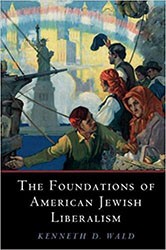Renowned biblical scholar Ilana Pardes has made a welcome contribution to Yale University Press’s award-winning Jewish Lives series with Ruth: A Migrant’s Tale. She shows how communities in different historical contexts build on the biblical account of Ruth by adapting her to fit their own time and place.
Pardes highlights several aspects of the biblical narrative that inform how Ruth is understood by later communities. Despite being a Moabite woman, Ruth admirably vows to follow her Israelite mother-in-law, Naomi, wherever she goes, and to accept Naomi’s deity as her own. Ruth thus becomes an archetype of hesed, a Hebrew term meaning “loving kindness” that is weighted with ethical and mystical significance. Ruth is also a gleaner, a person who collects unharvested produce and leaves it behind for the benefit of the poor. In the genealogy at the end of the biblical book, Ruth is an ancestor of King David, a figure with messianic significance.
The ancient rabbis of the Talmud and midrash portray Ruth as a model convert, dramatizing her commitment to her Israelite mother-in-law. For the medieval Jews who devoted themselves to a mystical form of Judaism known as Kabbalah, Ruth embodies the shekhinah, the feminine aspect of the divine. Kabbalists also emphasize the role of Ruth as shekhinah in ushering in the longed-for messianic era, given her connection with King David.
Beginning in the seventeenth century, painters — unlike the rabbis and Kabbalists — underscored Ruth’s role as a gleaner. Baroque artists often portrayed Ruth as a pastoral gatherer. Western nineteenth-century artists saw Ruth through the lens of Orientalism, portraying her as a seductive woman in an imagined Middle Eastern setting. The early Zionist movement also finds inspiration in Ruth’s agricultural pursuits. But rather than a gleaner, Zionist Ruth is a bold pioneer who arrives in the Holy Land ready to cultivate a new life. Twentieth-century American writers depict her as an outcast, someone who does not conform to the dominant society’s expectations, in part due to her non-Jewish roots.
Pardes suggests that Ruth remains relevant to our own age as a reminder of the many difficulties migrants often face. Leaving one’s home is never easy, especially if one is subjected to prejudice and discrimination. The Bible portrays Ruth in a sympathetic light despite her otherwise-othered Moabite origins. It demonstrates that her commitment to Naomi is so praiseworthy that she has become an archetype of loving kindness in the post-biblical Jewish tradition.
This lucid and engaging book explores some of the ways Ruth has been both a model and a resource for post-biblical readers. Tethered by a long reception history of her character, Ruth: A Migrant’s Tale shows how the Bible has been a fount of inspiration for religious leaders, scholars, artists, and mystics.
Brian Hillman is an assistant professor in the Department of Philosophy and Religious Studies at Towson University.





